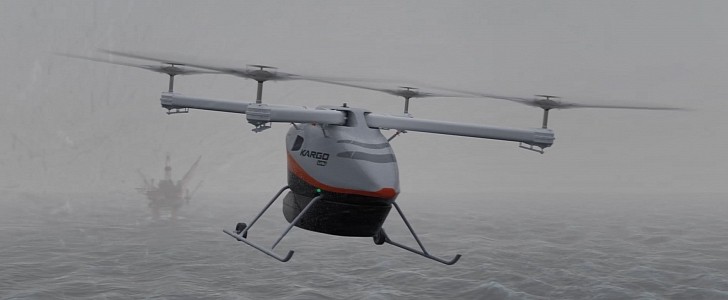When hearing of a drone in a box, our minds typically go to those friendly little things that can self-recharge remotely, used for monitoring sites in various work sectors. But the drone we’re talking about here comes in a different type of box, and it’s not meant to be friendly but rugged, strong, and reliable.
Military UAVs (Unmanned Aerial Vehicles) were developed in response to the drastic shifts in combat operations, requiring enhanced mobility and flexibility while also protecting personnel from potential risks as much as possible. Unmanned vehicles are widely considered one of the best cargo solutions on the field because they can provide critical supplies to numerous smaller units, covering lost distances and without putting additional troops at risk.
This is also what Kargo UAV is meant to do. Developed by Kaman, a Connecticut-based company that was founded back in 1945 by an aviation pioneer, Charles H. Kaman, this cargo drone is rugged enough to handle serious cargo and challenging environments while also being easily deployed. It was designed to fit in a standard cargo container, and it takes just two people to get it ready for its missions within minutes.
The first Kargo UAV prototype was tested last year, and a full-scale demonstrator is due to take to the sky by the end of this year. Meanwhile, the manufacturer was selected to build a military version of this medium-lift logistics vehicle for the U.S. Marines.
Particularly adapted for faraway missions, the future military UAV will be capable of self-deployment beyond 500 nautical miles (575 miles/926 km), depending on its cargo. With a 600-pound (272 kg) payload, the range drops to less than half. Equipped with a built-in autonomy system, the Kargo UAV will also be capable of detecting and avoiding obstacles and operate in so-called austere environments.
The new cargo drone prototype for the U.S. Marines will be built as part of the Medium Unmanned Logistics Systems – Air (MULS-A) program, managed by NAVAIR (Naval Air Systems Command).
This is also what Kargo UAV is meant to do. Developed by Kaman, a Connecticut-based company that was founded back in 1945 by an aviation pioneer, Charles H. Kaman, this cargo drone is rugged enough to handle serious cargo and challenging environments while also being easily deployed. It was designed to fit in a standard cargo container, and it takes just two people to get it ready for its missions within minutes.
The first Kargo UAV prototype was tested last year, and a full-scale demonstrator is due to take to the sky by the end of this year. Meanwhile, the manufacturer was selected to build a military version of this medium-lift logistics vehicle for the U.S. Marines.
Particularly adapted for faraway missions, the future military UAV will be capable of self-deployment beyond 500 nautical miles (575 miles/926 km), depending on its cargo. With a 600-pound (272 kg) payload, the range drops to less than half. Equipped with a built-in autonomy system, the Kargo UAV will also be capable of detecting and avoiding obstacles and operate in so-called austere environments.
The new cargo drone prototype for the U.S. Marines will be built as part of the Medium Unmanned Logistics Systems – Air (MULS-A) program, managed by NAVAIR (Naval Air Systems Command).








